4 Bakara
4.1 Continuous
4.1.1 elev
Figure 4.1 shows rasters for elev in the Bakara area.
Table 4.2 shows boxplots for each decile of elev, allowing a comparison of values within each DEM across different ranges of elev. Deciles are based on the values in the reference DEM: Ag.
Figure 4.3 shows the a distribution of values for each sample DEM and window size.
Figure 4.4 shows the distribution of differences between the reference DEM and the other DEMs.
Figure 4.1: elev raster for each DEM

Figure 4.2: Range of values within deciles for each DEM. Deciles are taken from the reference DEM
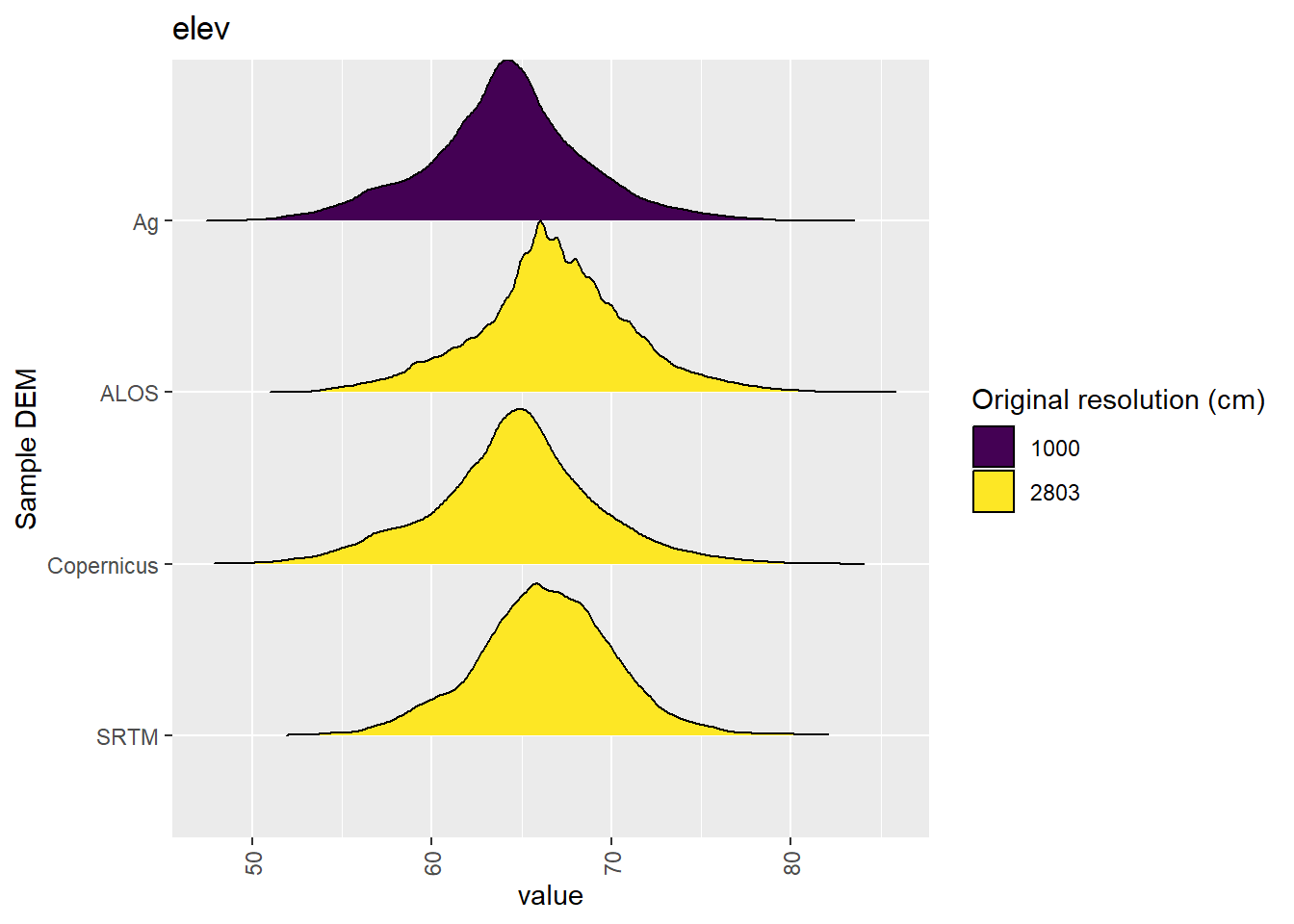
Figure 4.3: Distribution of elev values in each DEM: Bakara
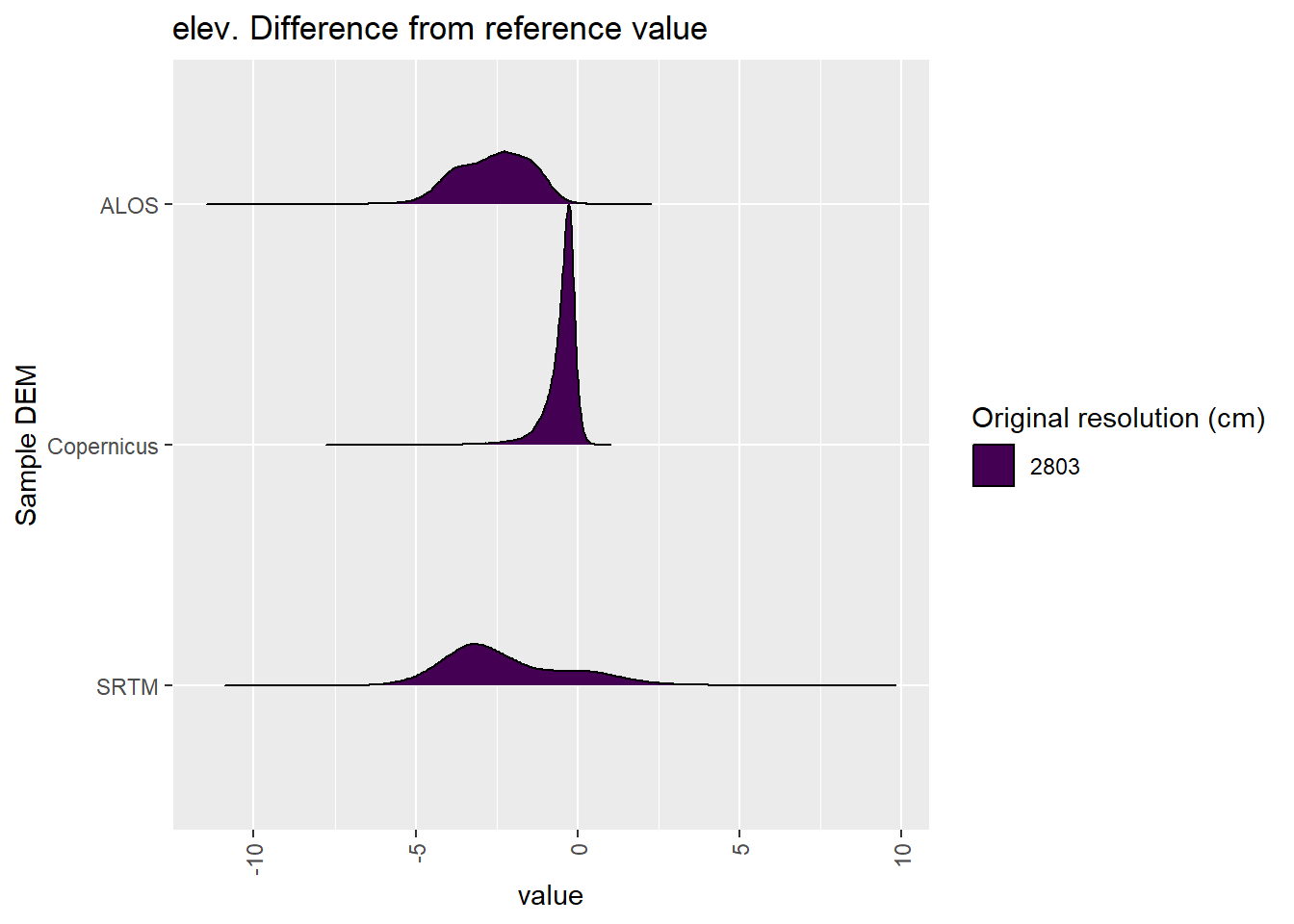
Figure 4.4: Distribution of difference between each DEM and reference for elev values: Bakara
4.1.2 qslope
Figure 4.5 shows rasters for qslope in the Bakara area.
Table 4.6 shows boxplots for each decile of qslope, allowing a comparison of values within each DEM across different ranges of qslope. Deciles are based on the values in the reference DEM: Ag.
Figure 4.7 shows the a distribution of values for each sample DEM and window size.
Figure 4.8 shows the distribution of differences between the reference DEM and the other DEMs.
Figure 4.5: qslope raster for each DEM
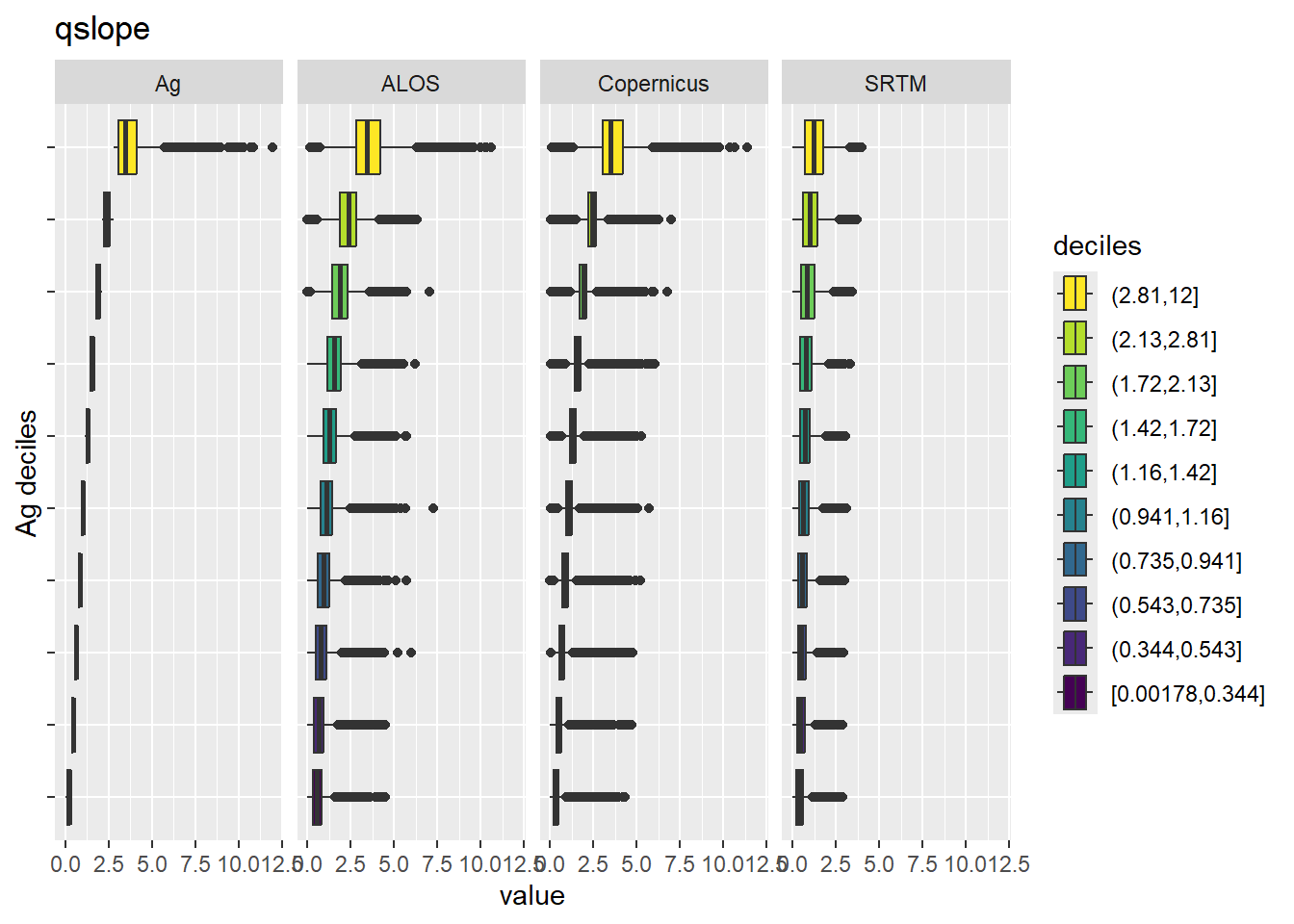
Figure 4.6: Range of values within deciles for each DEM. Deciles are taken from the reference DEM
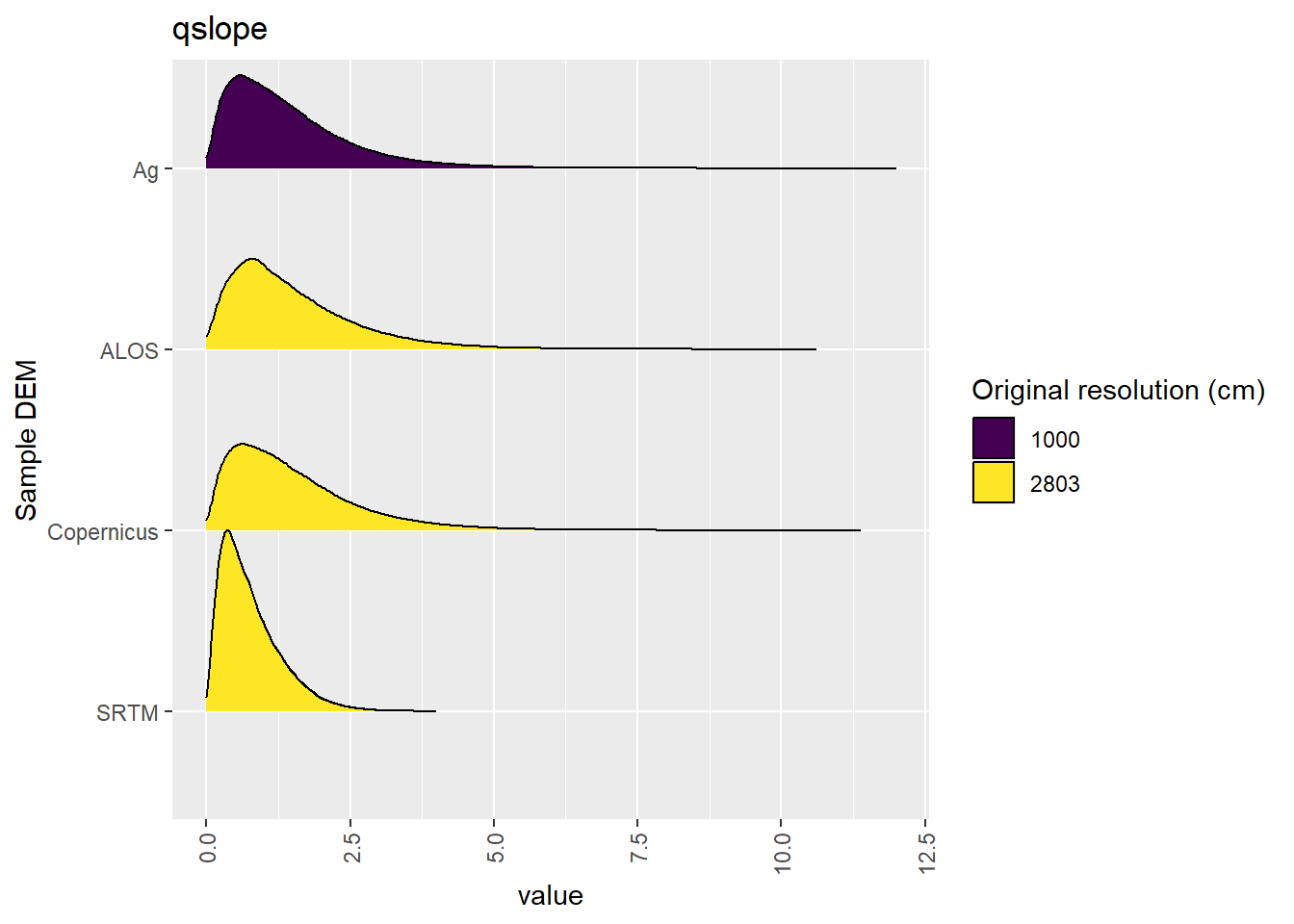
Figure 4.7: Distribution of qslope values in each DEM: Bakara
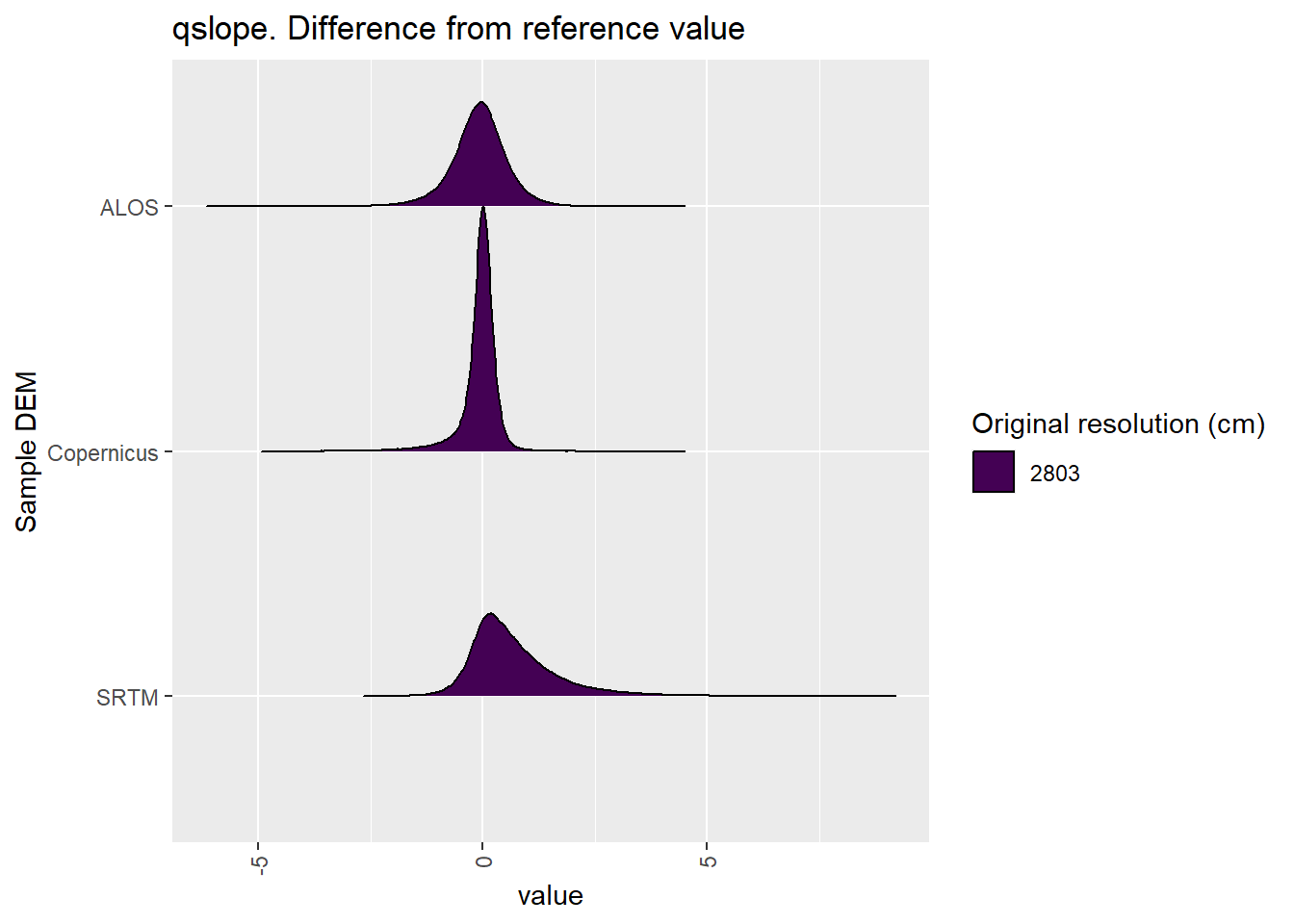
Figure 4.8: Distribution of difference between each DEM and reference for qslope values: Bakara
4.1.3 qaspect
Figure 4.9 shows rasters for qaspect in the Bakara area.
Table 4.10 shows boxplots for each decile of qaspect, allowing a comparison of values within each DEM across different ranges of qaspect. Deciles are based on the values in the reference DEM: Ag.
Figure 4.11 shows the a distribution of values for each sample DEM and window size.
Figure 4.12 shows the distribution of differences between the reference DEM and the other DEMs.
Figure 4.9: qaspect raster for each DEM
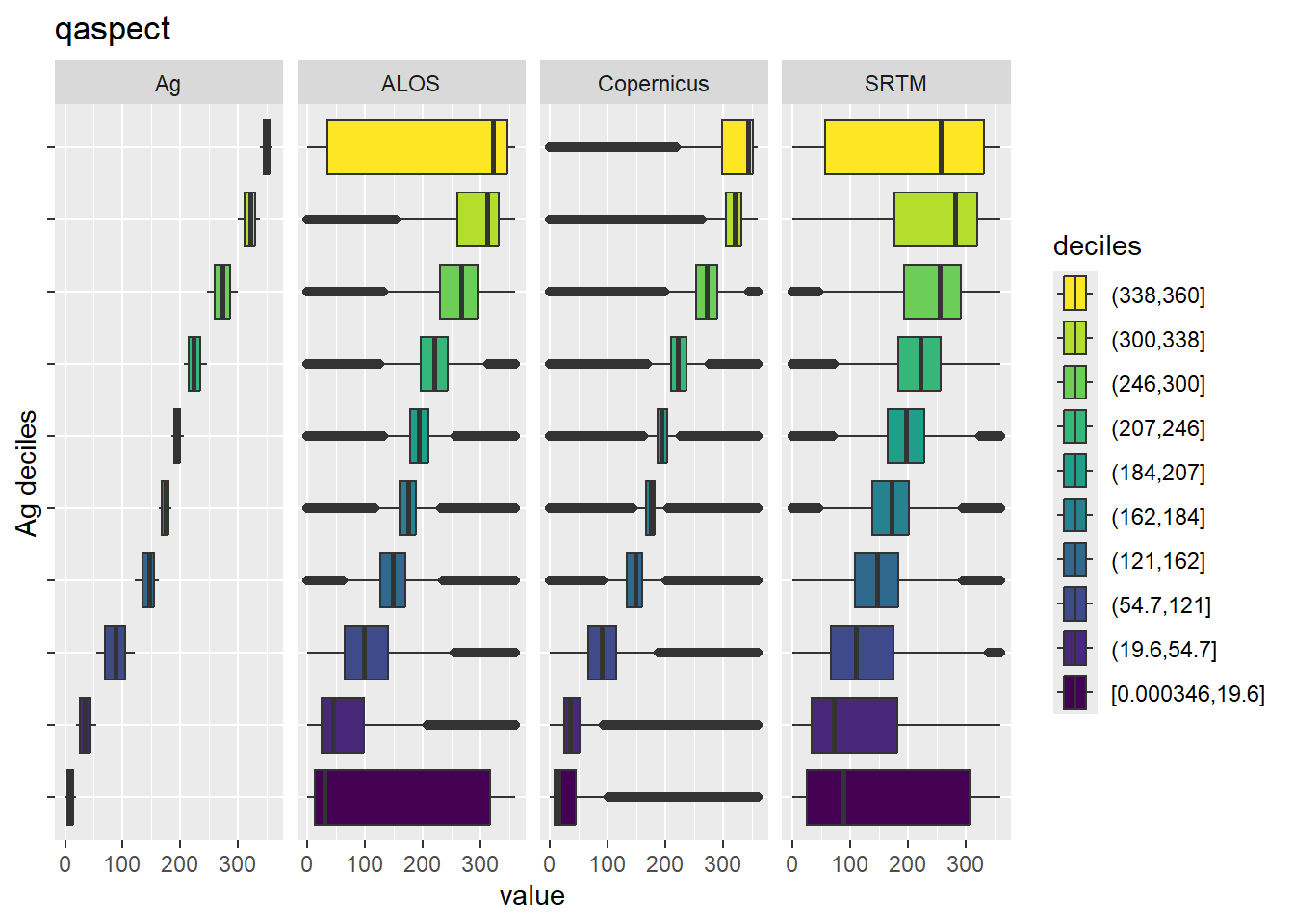
Figure 4.10: Range of values within deciles for each DEM. Deciles are taken from the reference DEM

Figure 4.11: Distribution of qaspect values in each DEM: Bakara
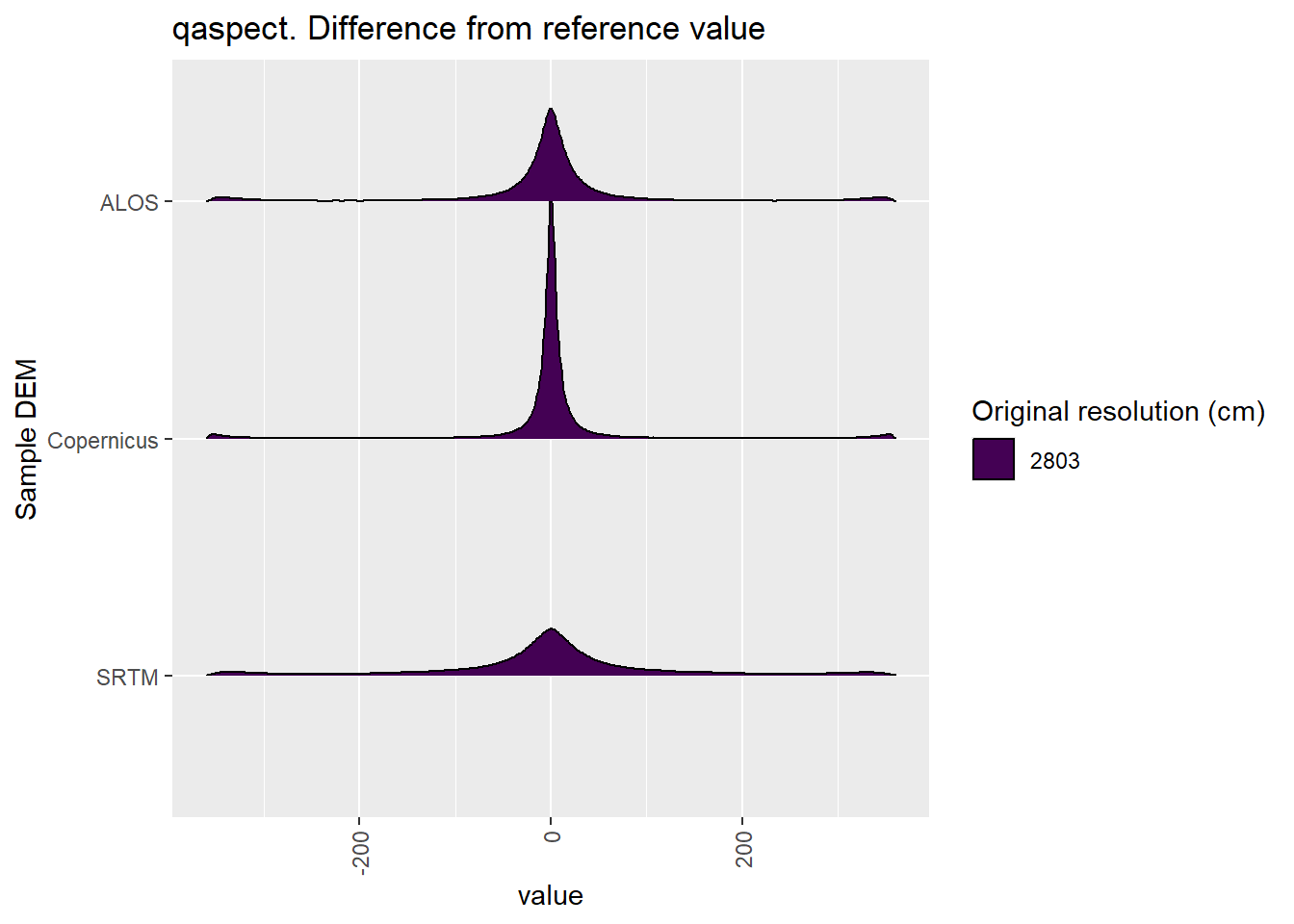
Figure 4.12: Distribution of difference between each DEM and reference for qaspect values: Bakara
4.1.4 qeastness
Figure 4.13 shows rasters for qeastness in the Bakara area.
Table 4.14 shows boxplots for each decile of qeastness, allowing a comparison of values within each DEM across different ranges of qeastness. Deciles are based on the values in the reference DEM: Ag.
Figure 4.15 shows the a distribution of values for each sample DEM and window size.
Figure 4.16 shows the distribution of differences between the reference DEM and the other DEMs.
Figure 4.13: qeastness raster for each DEM

Figure 4.14: Range of values within deciles for each DEM. Deciles are taken from the reference DEM
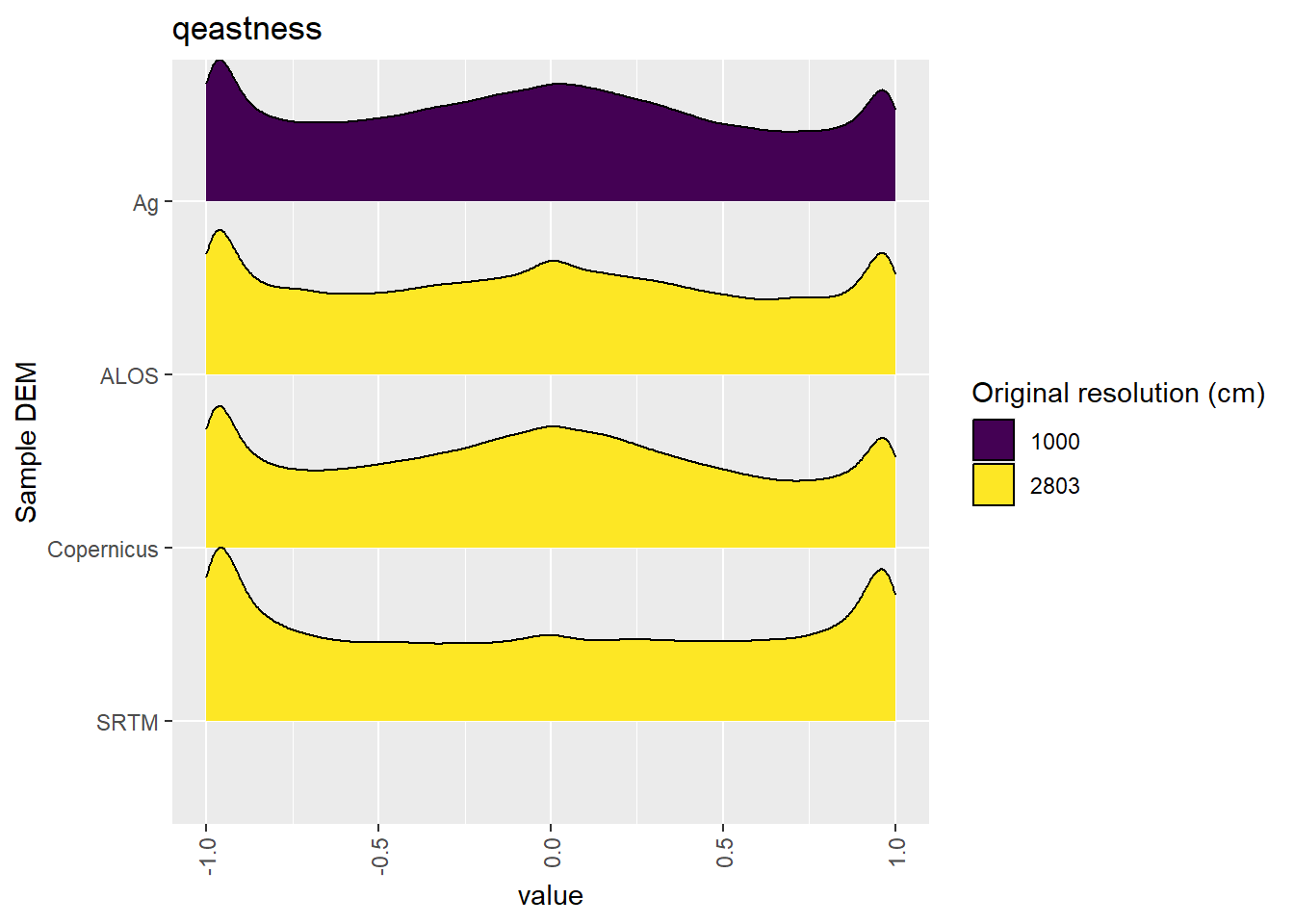
Figure 4.15: Distribution of qeastness values in each DEM: Bakara
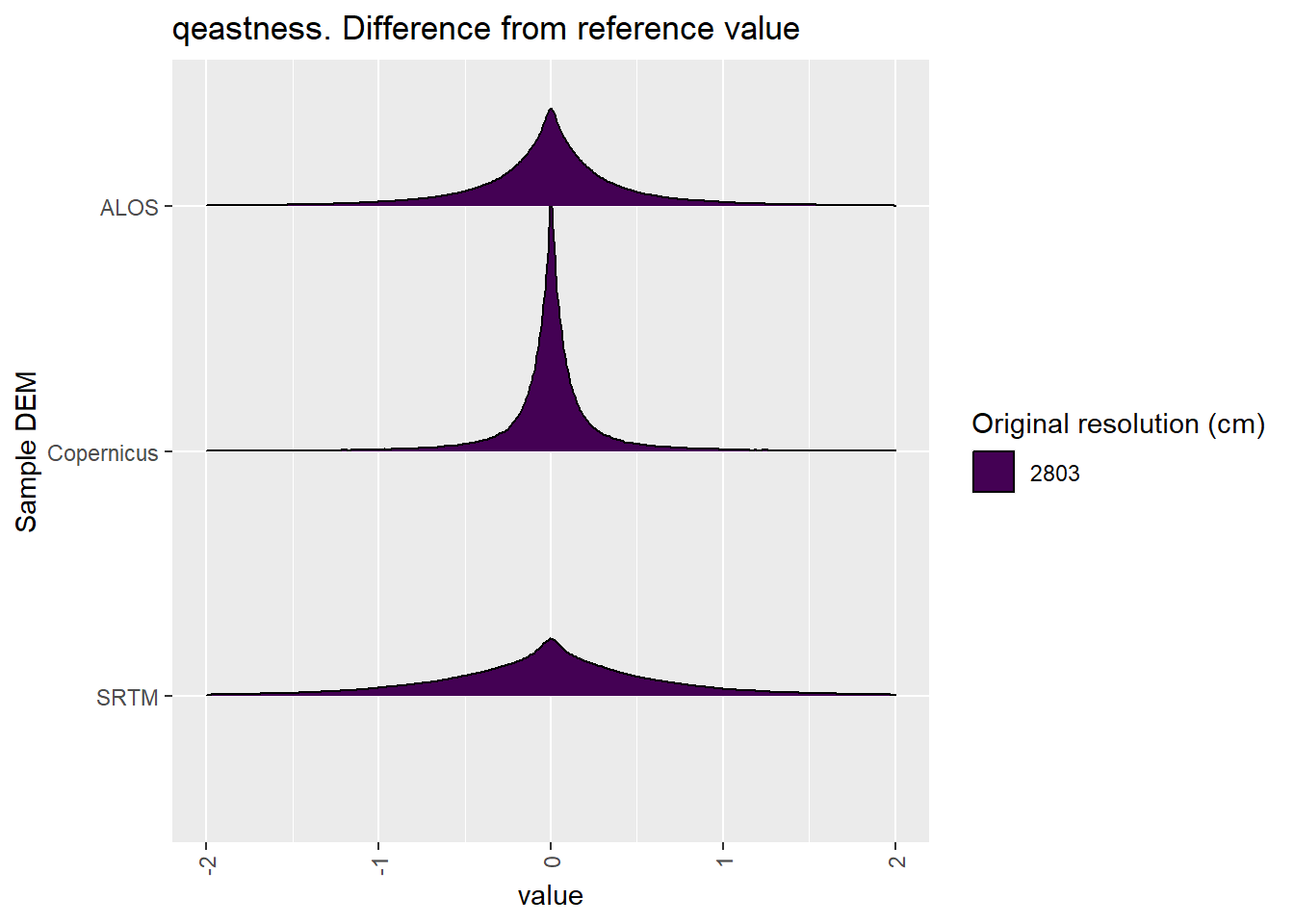
Figure 4.16: Distribution of difference between each DEM and reference for qeastness values: Bakara
4.1.5 qnorthness
Figure 4.17 shows rasters for qnorthness in the Bakara area.
Table 4.18 shows boxplots for each decile of qnorthness, allowing a comparison of values within each DEM across different ranges of qnorthness. Deciles are based on the values in the reference DEM: Ag.
Figure 4.19 shows the a distribution of values for each sample DEM and window size.
Figure 4.20 shows the distribution of differences between the reference DEM and the other DEMs.
Figure 4.17: qnorthness raster for each DEM

Figure 4.18: Range of values within deciles for each DEM. Deciles are taken from the reference DEM
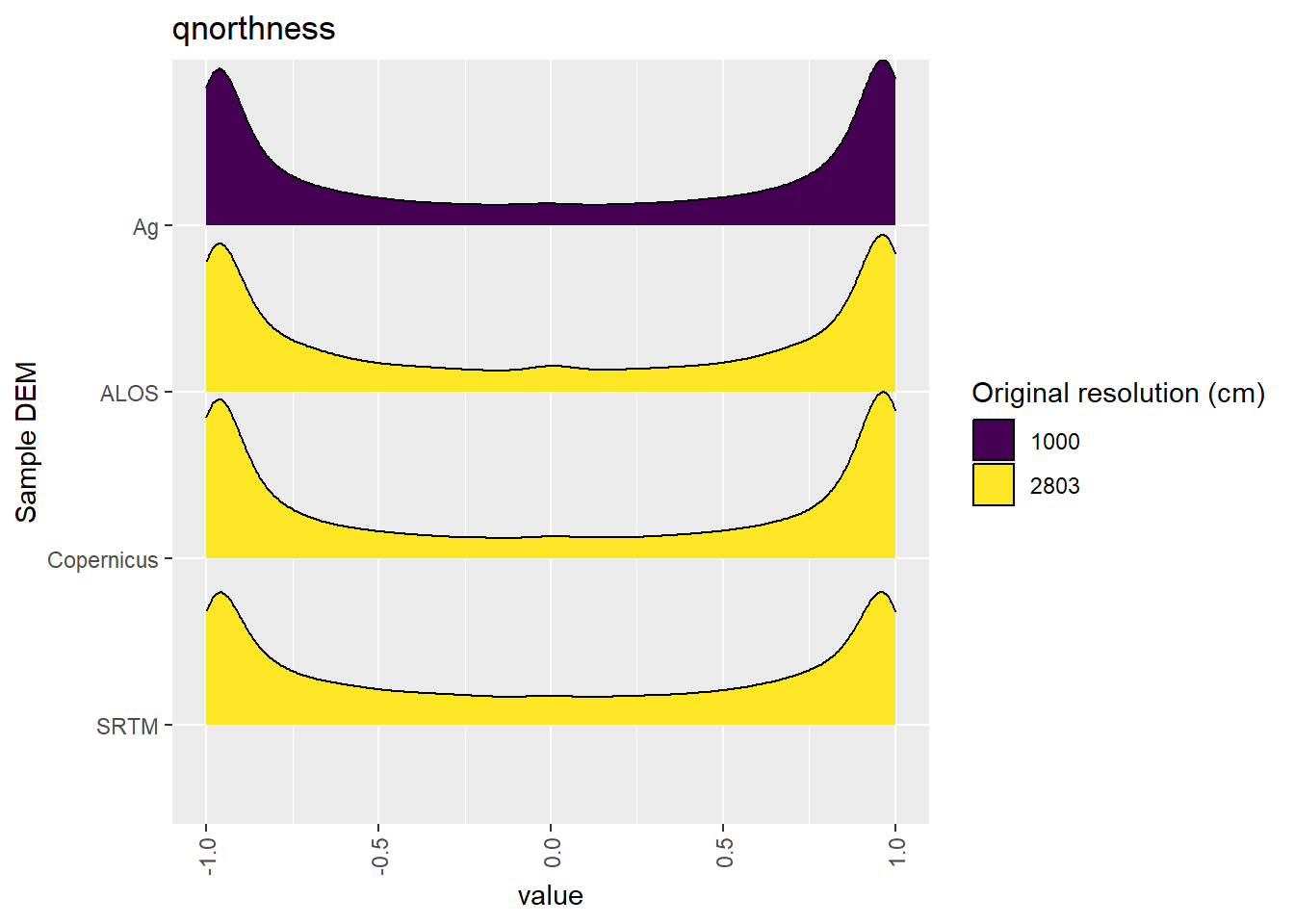
Figure 4.19: Distribution of qnorthness values in each DEM: Bakara
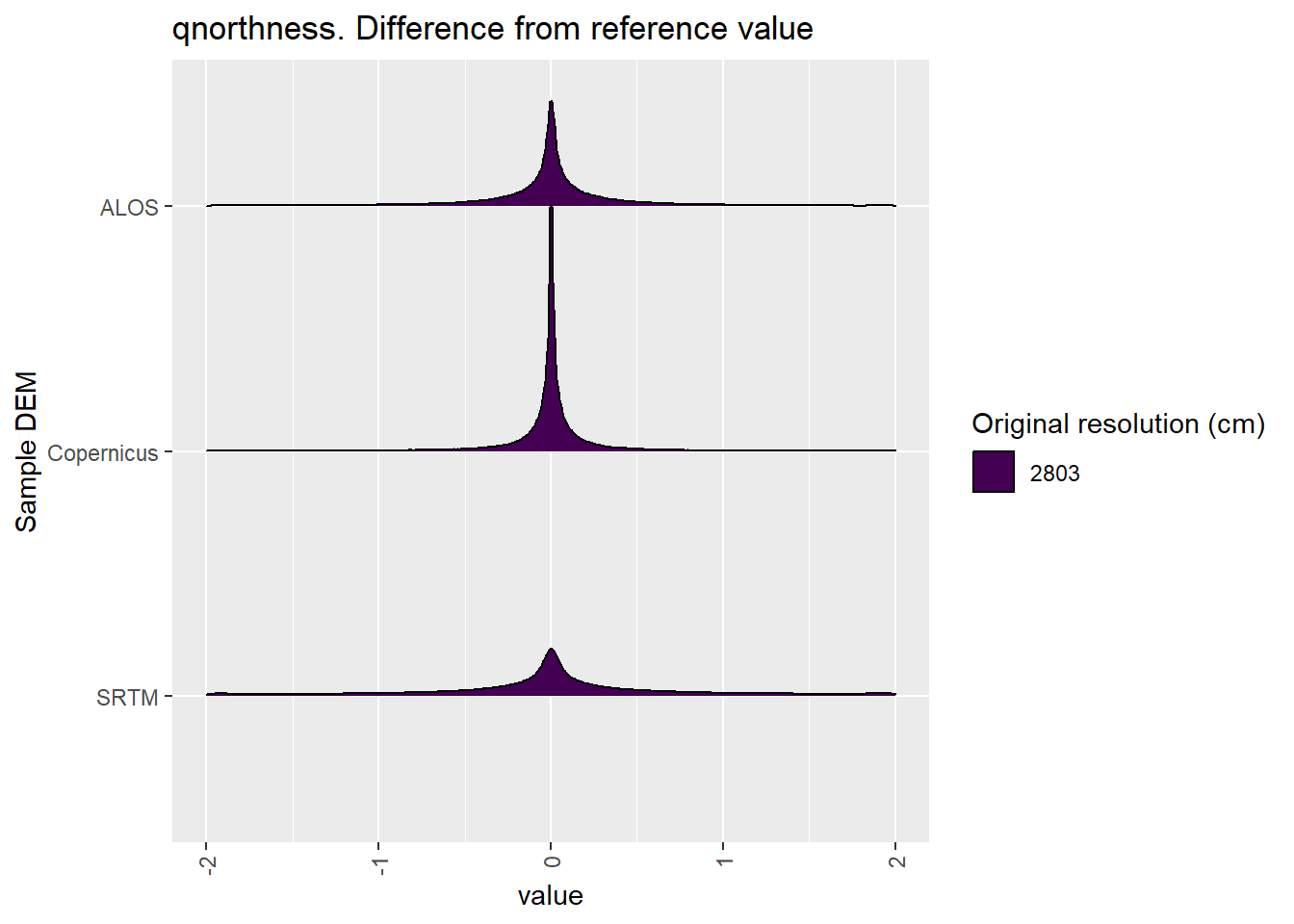
Figure 4.20: Distribution of difference between each DEM and reference for qnorthness values: Bakara
4.1.6 TPI
Figure 4.21 shows rasters for TPI in the Bakara area.
Table 4.22 shows boxplots for each decile of TPI, allowing a comparison of values within each DEM across different ranges of TPI. Deciles are based on the values in the reference DEM: Ag.
Figure 4.23 shows the a distribution of values for each sample DEM and window size.
Figure 4.24 shows the distribution of differences between the reference DEM and the other DEMs.
Figure 4.21: TPI raster for each DEM
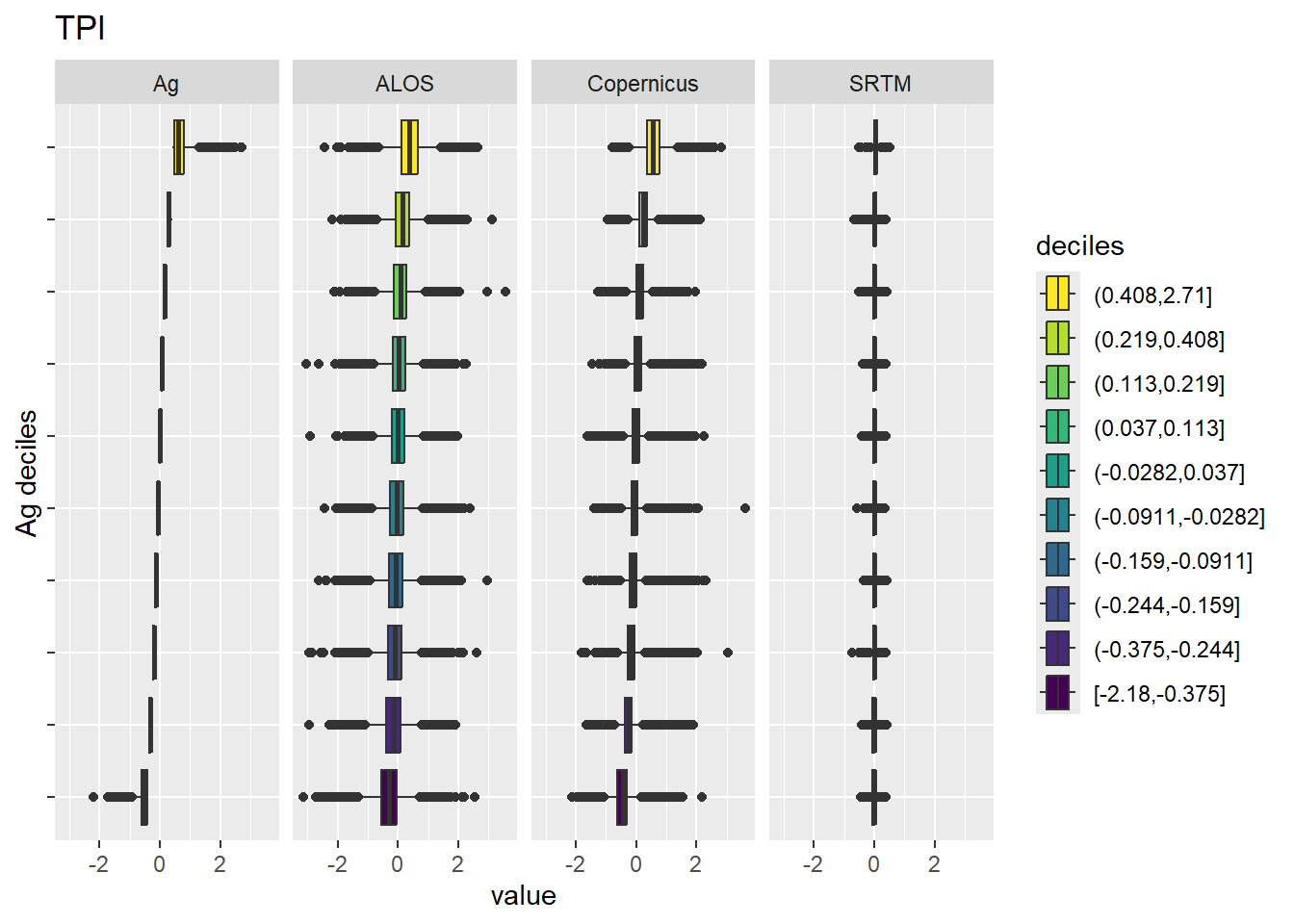
Figure 4.22: Range of values within deciles for each DEM. Deciles are taken from the reference DEM

Figure 4.23: Distribution of TPI values in each DEM: Bakara
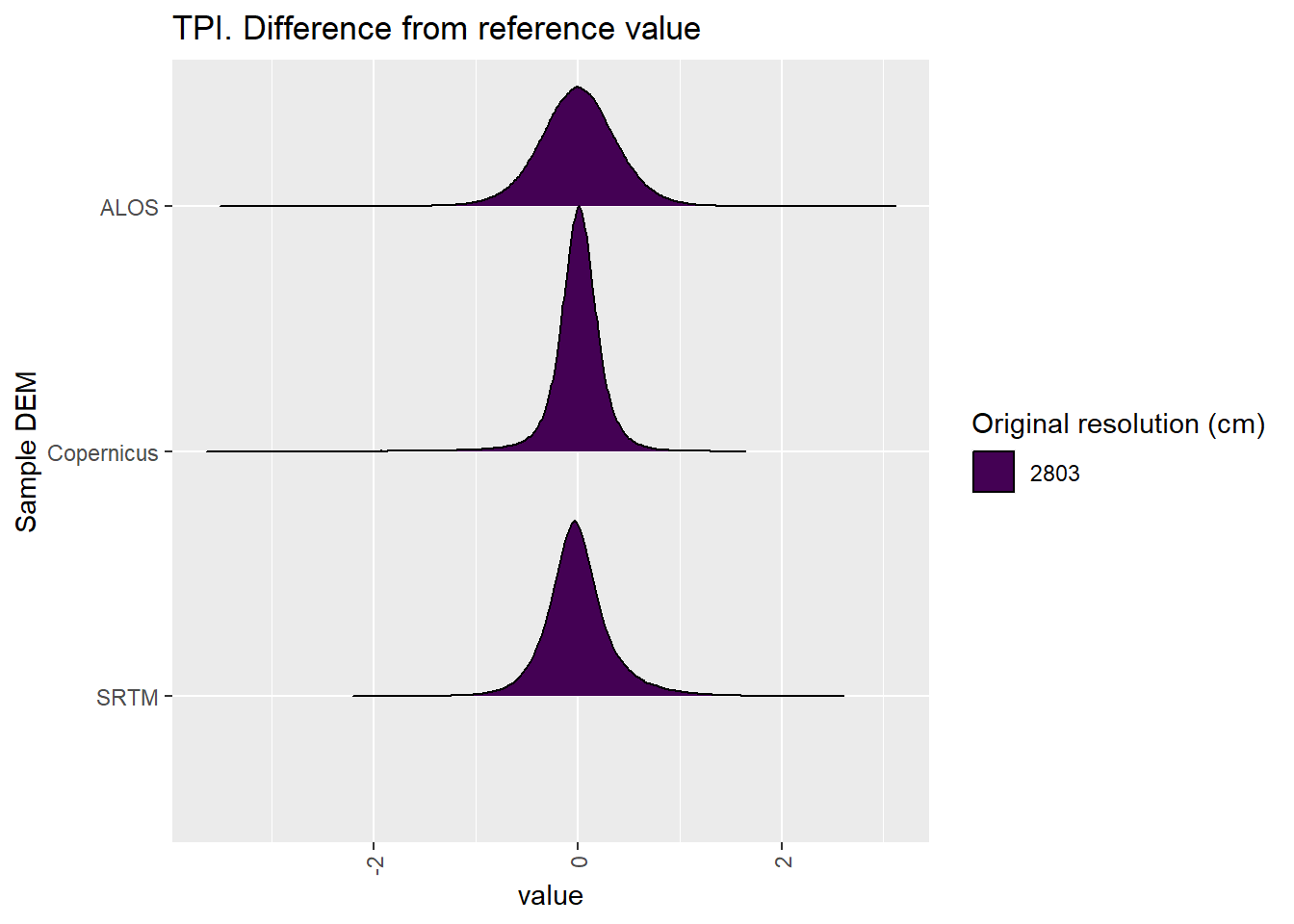
Figure 4.24: Distribution of difference between each DEM and reference for TPI values: Bakara
4.1.7 TRI
Figure 4.25 shows rasters for TRI in the Bakara area.
Table 4.26 shows boxplots for each decile of TRI, allowing a comparison of values within each DEM across different ranges of TRI. Deciles are based on the values in the reference DEM: Ag.
Figure 4.27 shows the a distribution of values for each sample DEM and window size.
Figure 4.28 shows the distribution of differences between the reference DEM and the other DEMs.
Figure 4.25: TRI raster for each DEM

Figure 4.26: Range of values within deciles for each DEM. Deciles are taken from the reference DEM

Figure 4.27: Distribution of TRI values in each DEM: Bakara

Figure 4.28: Distribution of difference between each DEM and reference for TRI values: Bakara
4.1.8 TRIriley
Figure 4.29 shows rasters for TRIriley in the Bakara area.
Table 4.30 shows boxplots for each decile of TRIriley, allowing a comparison of values within each DEM across different ranges of TRIriley. Deciles are based on the values in the reference DEM: Ag.
Figure 4.31 shows the a distribution of values for each sample DEM and window size.
Figure 4.32 shows the distribution of differences between the reference DEM and the other DEMs.
Figure 4.29: TRIriley raster for each DEM

Figure 4.30: Range of values within deciles for each DEM. Deciles are taken from the reference DEM
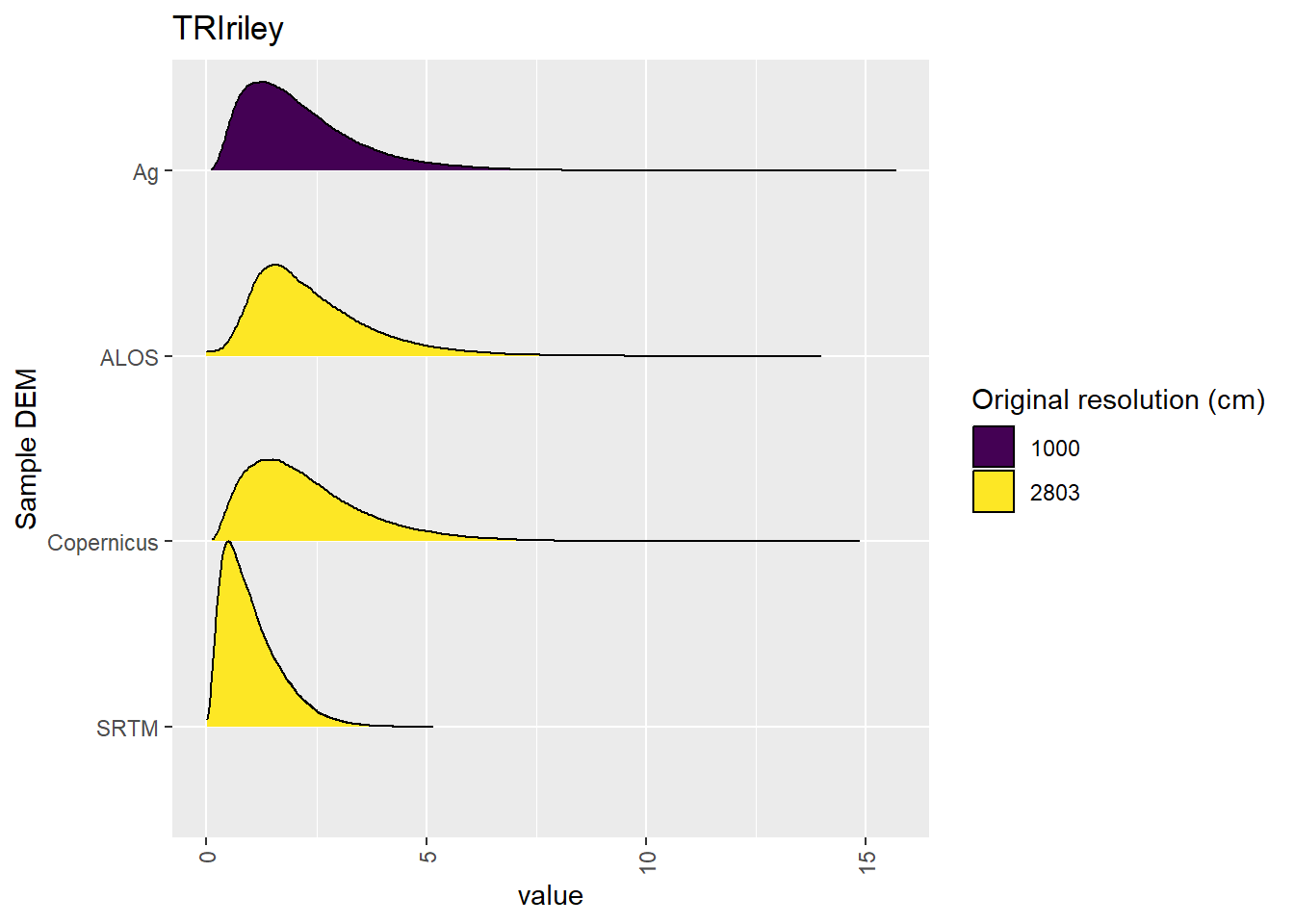
Figure 4.31: Distribution of TRIriley values in each DEM: Bakara
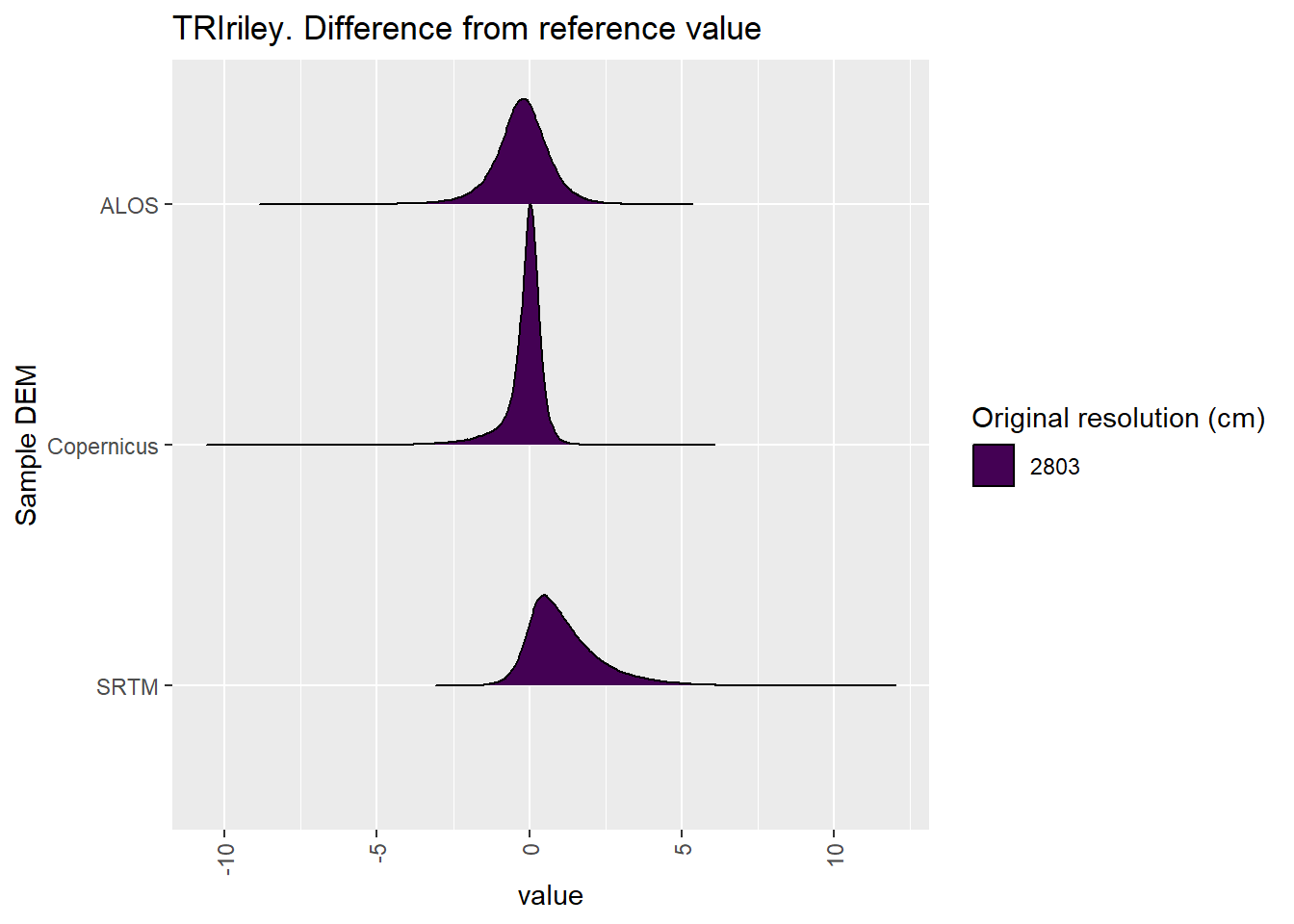
Figure 4.32: Distribution of difference between each DEM and reference for TRIriley values: Bakara
4.1.9 TRIrmsd
Figure 4.33 shows rasters for TRIrmsd in the Bakara area.
Table 4.34 shows boxplots for each decile of TRIrmsd, allowing a comparison of values within each DEM across different ranges of TRIrmsd. Deciles are based on the values in the reference DEM: Ag.
Figure 4.35 shows the a distribution of values for each sample DEM and window size.
Figure 4.36 shows the distribution of differences between the reference DEM and the other DEMs.
Figure 4.33: TRIrmsd raster for each DEM

Figure 4.34: Range of values within deciles for each DEM. Deciles are taken from the reference DEM
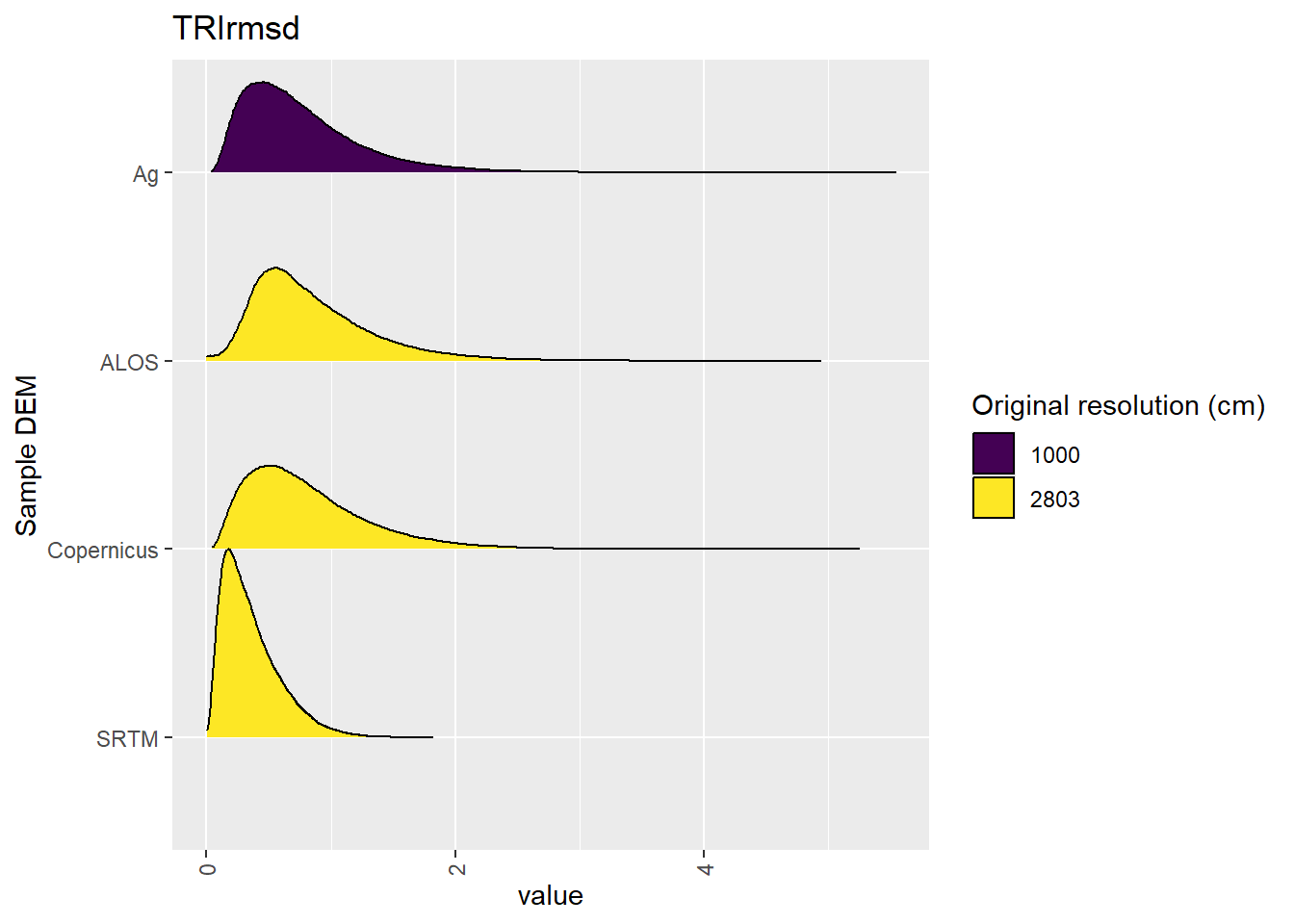
Figure 4.35: Distribution of TRIrmsd values in each DEM: Bakara
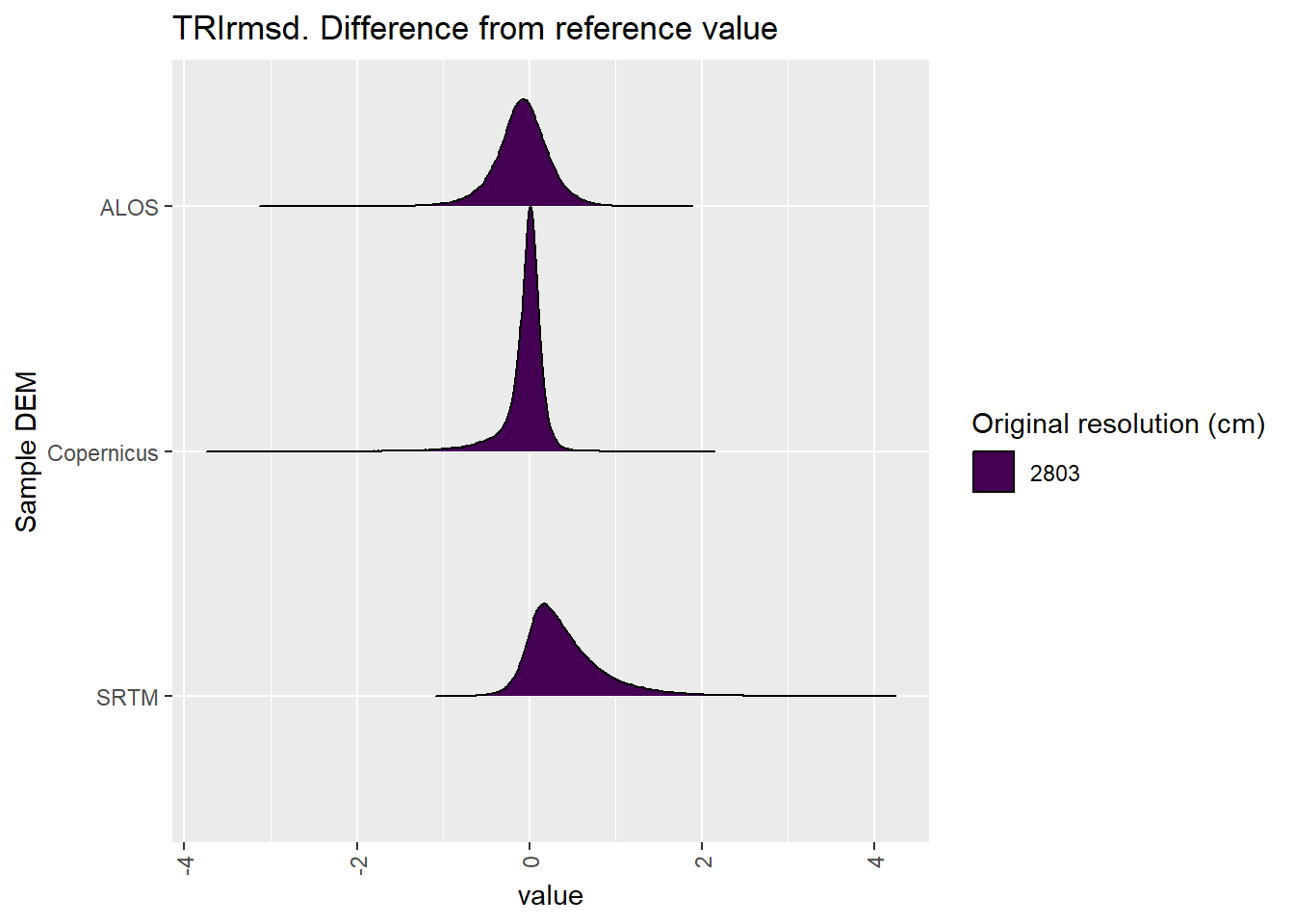
Figure 4.36: Distribution of difference between each DEM and reference for TRIrmsd values: Bakara
4.1.10 roughness
Figure 4.37 shows rasters for roughness in the Bakara area.
Table 4.38 shows boxplots for each decile of roughness, allowing a comparison of values within each DEM across different ranges of roughness. Deciles are based on the values in the reference DEM: Ag.
Figure 4.39 shows the a distribution of values for each sample DEM and window size.
Figure 4.40 shows the distribution of differences between the reference DEM and the other DEMs.
Figure 4.37: roughness raster for each DEM
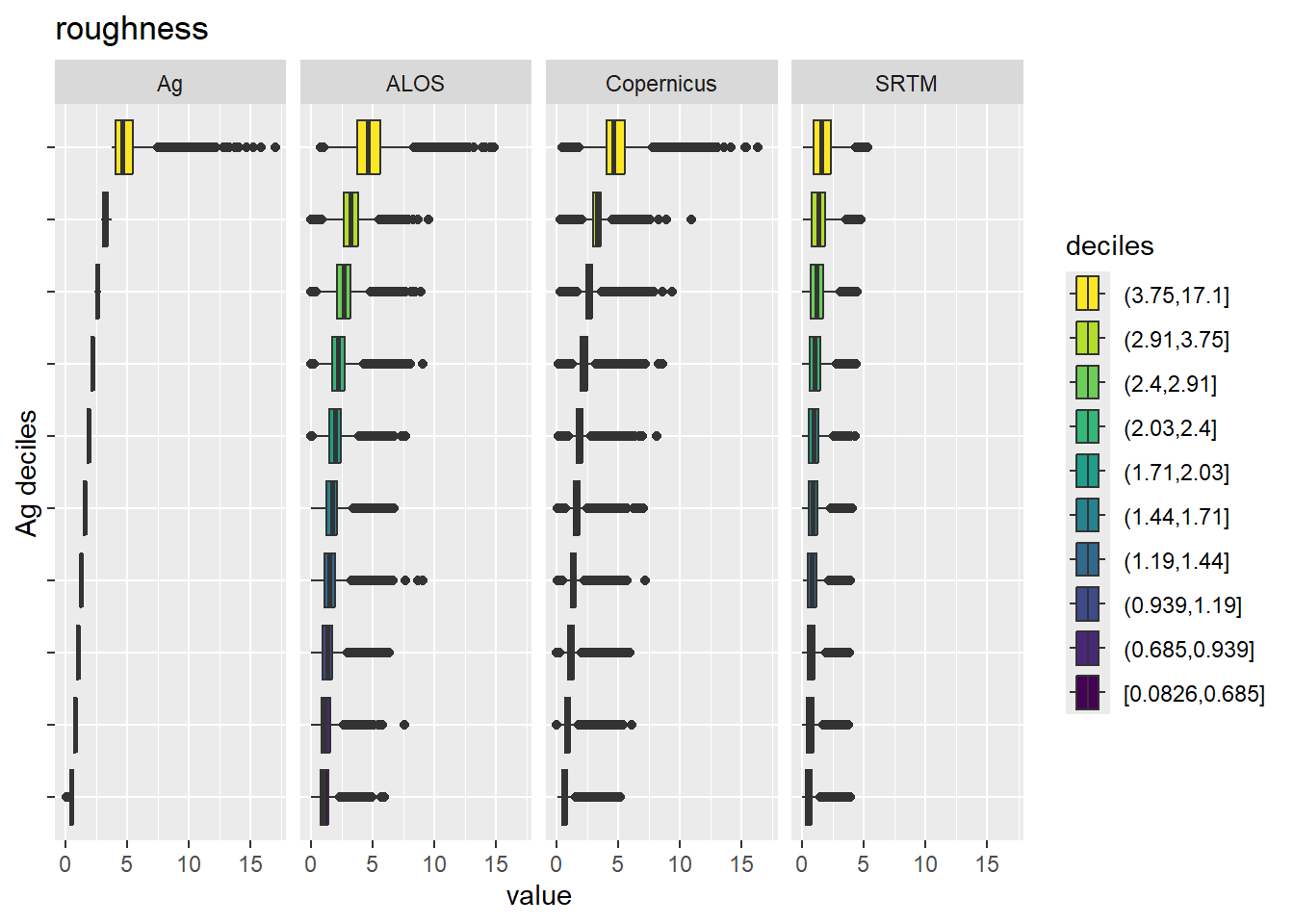
Figure 4.38: Range of values within deciles for each DEM. Deciles are taken from the reference DEM
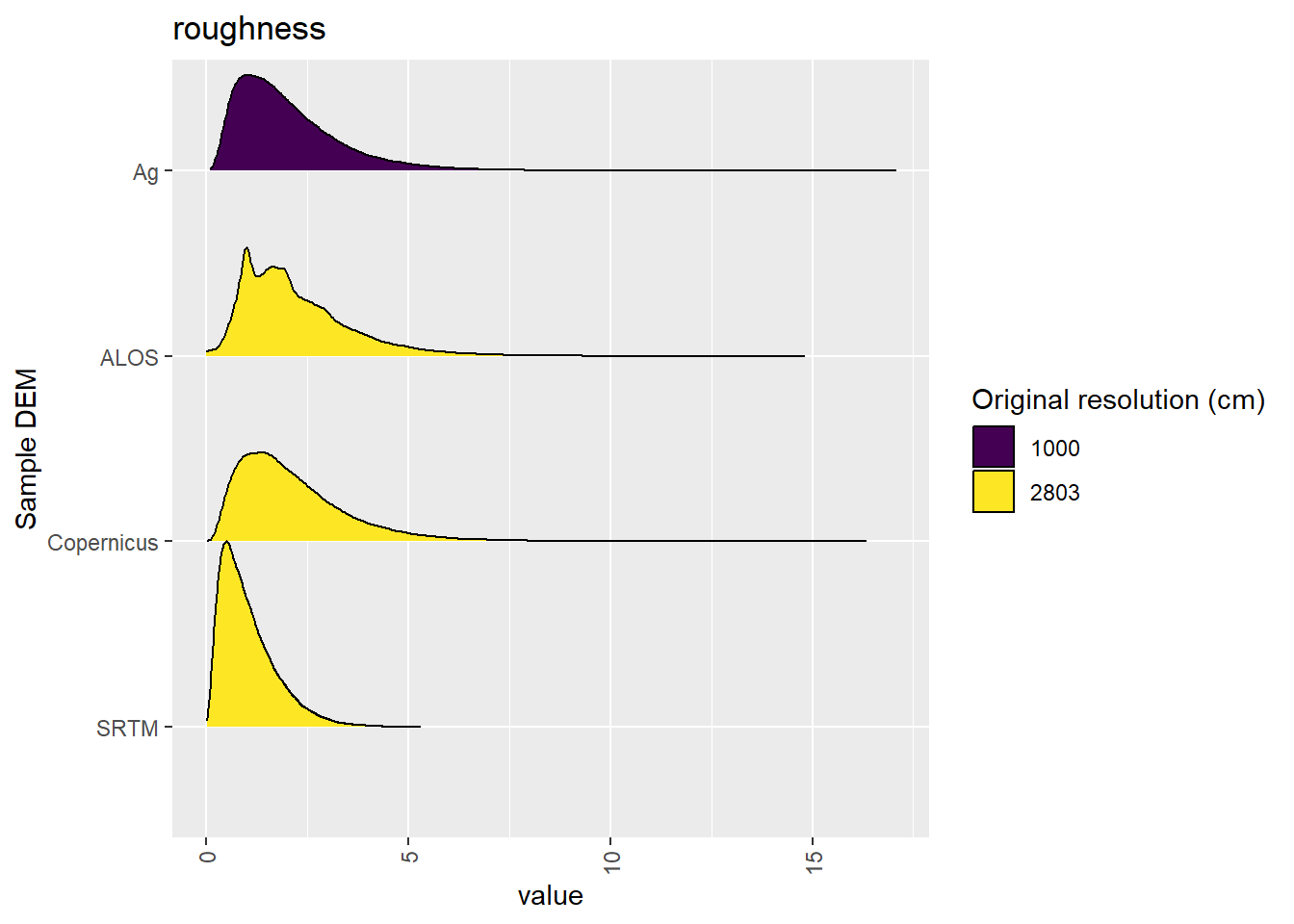
Figure 4.39: Distribution of roughness values in each DEM: Bakara
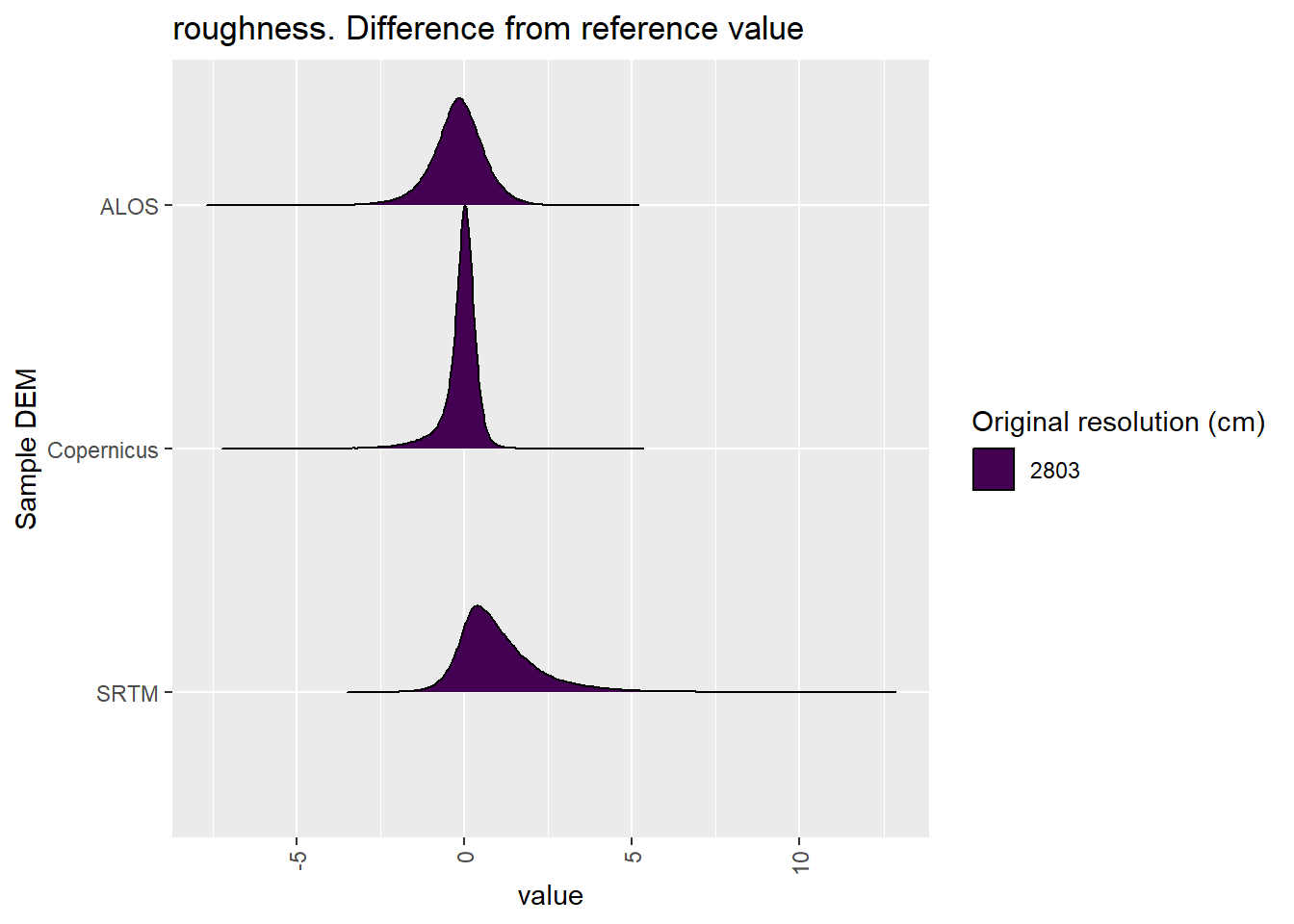
Figure 4.40: Distribution of difference between each DEM and reference for roughness values: Bakara
4.2 Categorical
Table 4.1 shows the proportion of each DEM classifed to each landform element (also see Figure 4.42.
Figure 4.41 shows a landscape classification for each reprojected area.
| landform | Ag | ALOS | Copernicus | SRTM |
|---|---|---|---|---|
| canyon | 0.014629 | 0.022248 | 0.015117 | 0.00340 |
| midslope drainage | 0.016231 | 0.019541 | 0.016481 | 0.00162 |
| upland drainage | 0.000013 | 0.000022 | 0.000022 | |
| u-shaped valley | 0.066413 | 0.068064 | 0.070565 | 0.03232 |
| plains | 0.773198 | 0.754703 | 0.761839 | 0.91754 |
| open slopes | 0.010012 | 0.011735 | 0.011372 | |
| upper slopes | 0.082147 | 0.083463 | 0.085914 | 0.04047 |
| local ridges | 0.000022 | 0.000031 | 0.000018 | |
| midslopes ridges | 0.016486 | 0.019711 | 0.016732 | 0.00072 |
| mountain tops | 0.020848 | 0.020481 | 0.021939 | 0.00391 |
Figure 4.41: Categorical representation of Bakara

Figure 4.42: Proportion of categorised Bakara area in each of several classification classes